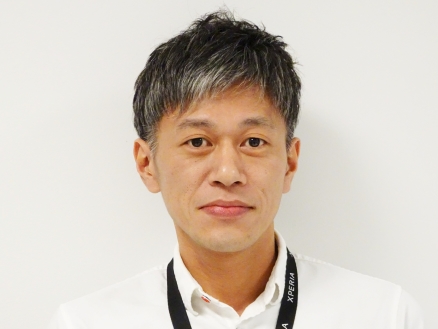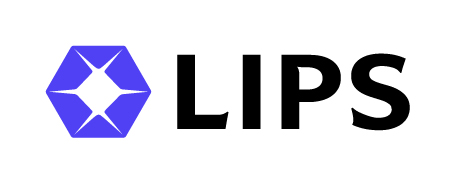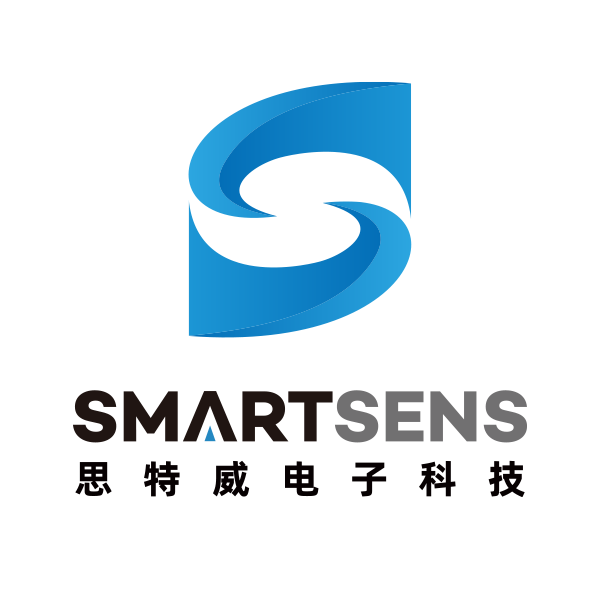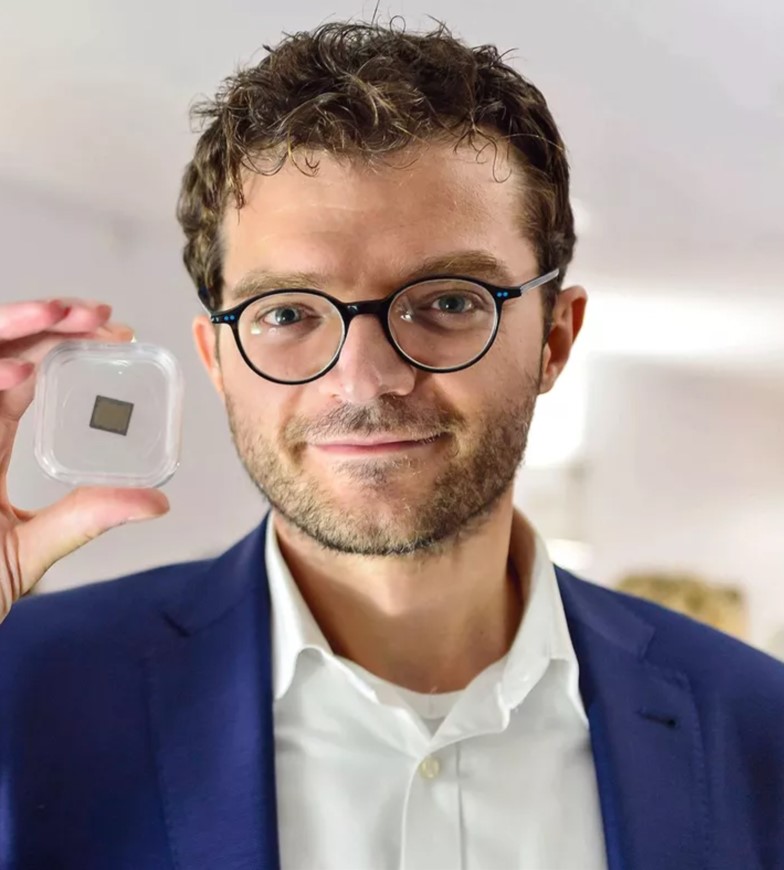

Anas Chalak is Technology & Market analyst at Yole Group. He is a member of the Imaging team. Anas contributes on a day-to-day basis to follow imaging technology activity to provide market and technology analysis, as well as contributing to the production of relevant reports and projects. Previously, Anas carried out research focusing on integrated mid-infrared photonics. Later, he worked as a research engineer on the optical optimization of a 3D FMCW lidar system in CEA-Leti, France. Anas obtained a Master’s in Nanoscale Engineering from École Centrale de Lyon, France.


Min-Woong Seo received his Ph.D. degree from Shizuoka University, Hamamatsu, Japan, in 2012, with a dissertation focused on low-noise, high-dynamic-range CMOS image sensors using high-performance analog-to-digital converters (ADCs). From 2012 to 2014, he was a JSPS Research Fellow at the Imaging Devices Laboratory of Shizuoka University. He then served as an Assistant Professor at the Research Institute of Electronics (RIE), Shizuoka University, from 2014 to 2016, and as an Associate Professor from 2016 to 2018. In 2018, he joined the Semiconductor R&D Center (SRDC) at Samsung Electronics, Hwaseong, Korea.
His research interests include CMOS imaging devices, low-noise imaging, time-resolved image sensors, global-shutter image sensors, pixel-/column-parallel ADCs for imagers, and mixed analog/digital circuit design. He has been serving on the Technical Program Committee (TPC) of Electronic Imaging (EI) since 2018 and of the International Solid-State Circuits Conference (ISSCC) since 2024. He has also been a steering committee member of the Korean Image Sensor Society (KISS) since 2024, a board member of the International Image Sensor Society (IISS) since 2025, and an advisory board member of Image Sensors (IS) Asia since 2025.


Dr Renato Turchetta received the M.S. degree in Physics from the University of Milan (Italy) in 1988 and the Ph.D. from the University of Strasbourg (France) in 1991. In 1999 he joined the Rutherford Appleton Laboratory in the UK. In 2001 he founded a design group developing custom CMOS image sensors (CIS). With his team he developed the first CIS product for electron microscopy, a 16Mpixel, rad-hard sensor, as well as a global shutter, 5 million frames per second, megapixel CIS. In 2014 he co-founded Vivamos Ltd., a spin-off set up with the goal to commercialise his 6.7 Mpixel, wafer-scale, video rate CIS. He was executive director of the company until the end of 2016. In 2017 he co-founded IMASENIC, where he is the CEO. Renato is member of the Advisory Board of the Image Sensors Europe conference since 2011. He also authored or co-authored over 100 papers in peer-review journals and 10 patents.

.png?ext=.png)
Dr. Artem Shulga is the founder and CEO of QDI Systems, a deep-tech company based in Groningen, Netherlands, that pioneers quantum dot technology for advanced imaging applications, including X-ray and SWIR. Originally from Eastern Ukraine, he earned his PhD in quantum dots at the University of Groningen. Inspired by a research internship at the University of Tokyo, he founded QDI Systems in 2019 as a spin-off from the Zernike Institute for Advanced Materials. His work focuses on developing scalable, affordable imaging solutions.


Myonglae Chu received his Ph.D. in Mechatronics Engineering from the Gwangju Institute of Science and Technology (GIST), South Korea, in 2016. In 2015, he was a Visiting Scholar at the Interuniversity Microelectronics Centre (IMEC) in Leuven, Belgium. From 2016 to 2018, he worked as an R&D Engineer at IMEC, focusing on the Imager System-on-Chip Department for CMOS image sensors (CIS). He then joined Samsung Electronics in Hwaseong, South Korea, as a Staff Engineer from 2018 to 2022, where he served as the lead engineer for pixel-level ADC design in high-performance image sensors. From 2022 to 2024, he was with Omnivision Technologies in San Jose, USA, continuing his work on advanced sensor design and architectures. He is currently a Principal Member of Technical Staff at IMEC, Belgium. His research interests include next-generation image sensor design, particularly in short-wavelength infrared (SWIR) imaging, pixel-level ADC, global shutter technology, and high dynamic range (HDR). He has authored multiple technical papers and holds over 20 patents related to image sensor technology.

Naoki Kawazu is a Senior Analog Design Manager of Automotive Development Department, Automotive Business Division at Sony Semiconductor Solutions Corporation. He joined Sony Corporation in 2008, where he has engaged in the development of CMOS Image Sensors.
In 2016, he joined the Automotive Business Division as a Senior Analog Design Engineer and engaged in the development of image sensors for automotive applications. In 2020, he joined EUDC, Europe Design Center, in Sony Europe Limited NUF. in Norway as an Analog Design Manager and led the development of next-generation image sensors. Currently, he holds 30+ patents and is developing next-generation image sensors as a Senior Analog Design Manager in Automotive Business Division.


Luke Liu is the founder and CEO of LIPS Corporation. From 2008 to 2010, he conducted research at MIT in Speech Recognition and Signal Processing while at Foxconn, where he envisioned the transformative role of 3D vision and machine intelligence in automation and AI.
He later founded LIPS, focusing on 3D depth cameras and AI software to power industrial automation, logistics, and robotics. Under his leadership, LIPS has secured multiple patents and built a global presence through partnerships with technology leaders such as Ambarella, Intel, NVIDIA, and Cadence.
Today, LIPS continues to innovate in 3D vision and edge AI, driving smarter automation as a Robotics Vision Platform & Edge AI Solutions Provider.


Andrew Lee has a master and PhD degree in mechanical engineering from Stanford university. He worked as the depth engineering manager in Apple Cupertino for up to a decade. During this time, he participated in multiple camera module development. His team lead the design for FaceID depth camera which became a field benchmark and mass producted for billions of units. Besides, he also led the development for the LiDAR scanner module design and development for iPhone Pro. Within Adaps Photonics, he is leading the system development team and the product development of SPAD sensor products. Among them, the ADS6311 SPAD sensor has one of the highest resolution for SPAD product, and has been widely accepted for robotics, automobile and industrial applications.


Master degree in Physics from Hiroshima Univ.
Developed CIS for mobile, DSC/CAM, and industrial use for 19 years at Sony.
Joined OmniVision in 2024, working for mobile product development


I joined PYXALIS, design house of CMOS image sensing solutions, more than 3 years ago as Marketing & Business Development Manager.
Prior to joining PYXALIS, I worked for 28 years in STMicroelectronics & ST-Ericsson in different positions (Technical, Project Management, Product Marketing) for different markets and products.
I have a Master Degree in Microelectronics from Grenoble INP Phelma France.

Dr Xinyang Wang is the Founder, Chairman and CEO of Gpixel Group. With over 20 years’ experience in CMOS image sensor design, he has been responsible for designing and managing off-the-shelf and customized image sensor projects for industrial, medical, consumer and space applications.
Dr Wang received his PhD degree from Delft University of Technology in the Netherlands. He has authored or co-authored more than 50 scientific publications and hold more than 30 patents regarding CMOS image sensor design. He also serves in the technical committee of SPIE Electronic Imaging (EI) and the International Image Sensor Workshop (ISSW).


Dr. Lee has been working at Samsung Electronics since 2005 and has developed device and process integration of specialty semiconductors such as DDI, PMIC and Sensor. He is currently the group leader of the process architecture team in the sensor business.
Dr. Lee received his bachelor's, master's, and doctoral degrees in materials science and engineering from Seoul National University in 1999, 2001, and 2005.
He started his career in semiconductor process development at Samsung Electronics in 2005 and has worked not only in Logic processes but also in Discrete device, DDI, PMIC and Sensor semiconductor processes. He is currently leading the development of sensor processes such as logic process for ISP, next generation pixel process, WtoW interconnection process, and process of light receiving surface including color filter.


Yuichi Motohashi is the Senior Manager and Deputy Director of End Markets at GlobalFoundries, leading the global segment for automotive cameras, LiDAR, SerDes, and displays. With over 15 years of experience in the semiconductor industry, Yuichi has specialized in CMOS image sensors. He began their career at Sony in Japan, developing CMOS image sensors for automotive applications from the ground up and taking projects from the conceptual stage to mass production with various automotive customers. Yuichi served as product manager, overseeing several products mainly for US and EU customers.
After his tenure at Sony, Yuichi joined the Japanese start-up TIER IV, where he developed cutting-edge automotive cameras for their autonomous vehicle platform. Currently, at GlobalFoundries, Yuichi is responsible for sensing devices, including CMOS image sensors, SPAD, silicon photonics LiDAR, and display drivers for the automotive segment.
Yuichi holds a B.S. and M.S. in Electrical Engineering from Tohoku University, Miyagi, Japan, earned in 2006 and 2008, respectively. Yuichi holds more than 30 CMOS image sensor related patents.


4. Jessie Zhao, Marketing Manager of the Product Marketing Department at SmartSens. Graduated from the University of Leeds, UK, with a Master's degree. She joined SmartSens' Product Marketing Department in 2023. Her primary responsibilities include market strategy and campaign execution, product line planning, new product definition, and product project management. She is dedicated to providing customers with competitive products and enhancing the brand influence of SmartSens.

Abhinav Agarwal is currently a Member of Technical Staff with Forza Silicon (Ametek Inc.) and was instrumental in recently establishing a Forza India design center in Bangalore. He is a technical lead for various CMOS image sensors chips designed at Forza Silicon in applications ranging from cinematography, automotive and biomedical. As a lead author, he has presented papers at several prominent conferences like the International Image Sensor Workshop (IISW), IEEE VLSI Symposium on Circuits and Technology. He received the best student paper award at the IEEE Custom Integrated Circuits Conference in 2020. Abhinav is also passionate about improving the design and verification flows related to CMOS Image Sensors and has presented multiple collaborative articles with Siemens EDA at the Design Automation Conference (DAC). Prior to his role Forza, Abhinav was graduate researcher at Caltech working in implantable medical devices resulting in several US patents.


Luca Verre is Co-Founder and CEO of Prophesee, the inventor of the world’s most advanced neuromorphic vision systems. Prophesee’s patented technology is inspired by human vision, giving sight back to the blind and setting new artificial vision standards in industrial, aerospace & defense, mobility, XR and more.
Luca is a World Economic Forum Technology Pioneer. He has extensive international management experience in the industrial and electronics sectors. His experience includes project and product management, marketing and business development roles at Schneider Electric. Prior to Schneider Electric, Luca worked as a Research Assistant in Photonics at the Imperial College of London. Luca holds a MSc in Physics, Electronic and Industrial Engineering from Politecnico di Milano and Ecole Centrale and an MBA from INSEAD.


Mahabir Gupta is an Embedded Security Architect at Volvo, focusing on cybersecurity solutions for automotive systems. He ensures the security of critical components like image sensors, essential for advanced driver-assistance systems (ADAS) and autonomous driving. Mahabir collaborates with teams to address OEM requirements, such as data protection, real-time threat detection, and system compatibility. He works on tackling challenges like data integrity, encryption, and affordability, leveraging technologies like AI for monitoring and tamper-proof hardware for secure design. Beyond automotive, his expertise extends to securing image sensors in applications such as smart cities, industrial automation, and drone surveillance. With a passion for innovation, Mahabir is committed to shaping the future of safe, connected vehicles by integrating advanced cybersecurity measures that protect against evolving threats while maintaining performance and reliability.


François Chabrerie is the Sales Manager for Asia at SET CORPORATION, a French company specialized in high-precision flip-chip bonding solutions for advanced semiconductor applications. With over eight years of experience as a Field Service Engineer, François has installed and supported semiconductor equipment in leading imaging sensor manufacturing facilities worldwide, particularly in processes involving indium bump bonding.
His deep technical background, combined with a strong understanding of customer challenges in cleanroom environments, allows him to offer tailored, high-value solutions to key players in the imaging sensor industry. Today, he leads SET’s commercial activities across Asia, helping customers integrate cutting-edge bonding technologies into their most demanding production lines.
François brings a unique perspective shaped by years in the field and now focuses on building strong, long-term partnerships to support innovation and yield in advanced packaging.


Oren is an algorithm engineer with an M.Sc. in Electrical Engineering at the Samsung Israel Research Center (SIRC). SIRC leads the research and development of Samsung Electronics’ premium image sensors. Within the ISP Sensor team, Oren develops algorithms for high-end, high-resolution mobile image sensors, focusing on on-sensor demosaicing.

I am currently serving as the Chief Technology Officer (CTO) at PIXELPLUS. With over 20 years of experience in analog circuit design including power amplifiers, display driver ICs, and image sensor ROICs, I have led initiatives in both product development and system level integration across complex analog and mixed signal systems.
For the past seven years, my focus has been on the development of CMOS image sensors, particularly for automotive surround view monitoring (SVM), in-cabin, and home appliance applications. I have been responsible for managing the entire development process from technology development to mass production, emphasizing performance, reliability, and cost-efficiency.
My areas of technical expertise include advanced sensor architectures and technologies such as RGB, RGB-IR, High Dynamic Range (HDR), LED Flicker Mitigation (LFM), Rolling Shutter, and Global Shutter.
I hold a Master’s degree in Electrical Engineering from POSTECH (Pohang University of Science and Technology).


Jeroen Hoet is the CEO and co-founder of eyeo, a Dutch startup specializing in image sensors enabled with advanced nanophotonic color-splitting. eyeo aims to redefine image sensing by overcoming traditional filter limitations and enhancing image quality, resolution and low-light performance.